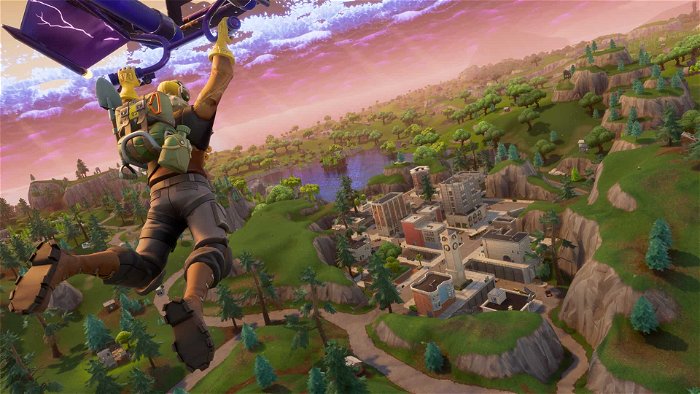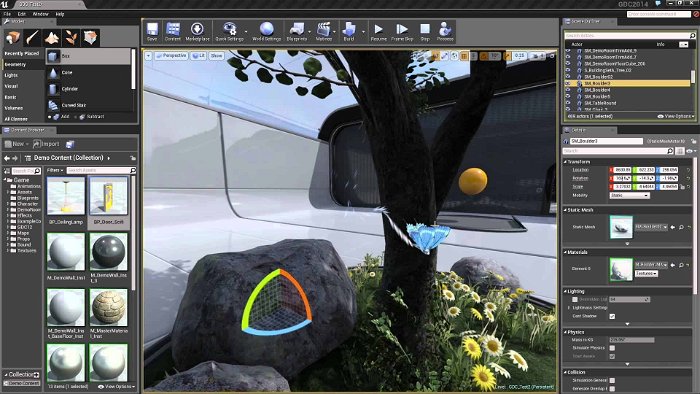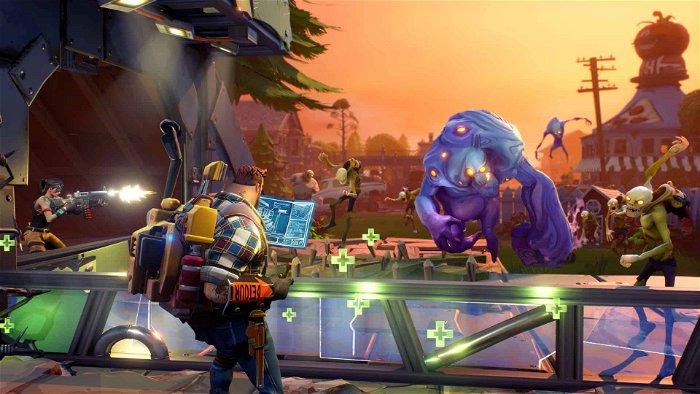Fortnite has become the biggest game worldwide. Built at Epic Games, the Battle Royal mode has blown up, with even non-gamers jumping to experience what the game has to offer. At its core Fortnite is built on Unreal Engine, an engine that powers many of the modern AAA gaming landscape.
Anyone looking to study Game Design, Unreal is an engine that is worth learning and working with, especially if you are looking to make gaming a lifelong career. While free and accessible engines like Unity and Unreal make it easy for beginners to dive right in and begin creating something, it takes a little more to understand what makes a good game. CGMagazine sat down with Education Evangelist for Epic Games, Luis Cataldi, to find out why the Unreal engine is so valuable to both students and teachers of game design.
CGMagazine: So what is it that you do?
Luis Cataldi: Well, I work with the engine team, really on a global level to help spread the Unreal Engine in an educational capacity. We’re focusing primarily at the university level initially, simply because universities have, probably, the largest volume of game development curriculums, but that doesn’t exclude secondary education or even primary education. There are many people who are teaching game development at many different levels and all of them have access to our learning resources, and my job is to work with educators and students willing to embrace the engine and take advantage of our learning resources.
Since we made the engine free for everyone to use and learn there’s been an incredible adoption across education; which is fantastic because not only do we make the engine available, but all the source-code for the engine is available. So from an art and design perspective it’s really valuable for people to grab the engine and design levels or build content for the engine and build a portfolio.
CGM: So Unreal is always changing?
Luis: Absolutely. I think one of the things that’s most relevant about Unreal Engine is that Epic games makes games, and it makes a game engine. There are hundreds of people using this Engine at Epic every day, and this is for our internal game projects. But then there are hundreds and hundreds of licences with thousands of people that are also using the engine that are giving us feedback on a daily basis, that then goes back into the engine and continues to evolve the tools in general.
And really it’s people that are saying, “well because I have access to the source code,” and this is not just professional game developers, this is academic people as well saying, “I want this solution. I need it. Let me put it in there.” And then Epic looks at the code and makes sure it plays nicely with the rest of the code, and then it’s integrated into the main branch and we release it to the rest of the public, which is fantastic.
CGM: So someone that’s working at a school could see their contribution to Unreal and present it for study?
Luis: Which is really valuable, right? I think one of the things that’s most relevant, and I say this to a lot of people; if you went to law school, you’d go and pass the bar and you’d have a license to practice law, but there is no license to practice art and engineering at the code-based level. Being able to contribute to something like Unreal engine or being able to build the high-calibre portfolio of a designer or an artist is what qualifies you to be a solution to someone’s development needs. And having access to a professional toolset like this makes an enormous difference.
CGM: You were saying about your set of tools for educators; what are they, how do they work and what do they offer someone who wants to teach Unreal in the classroom?
Luis: One of the things that we’ve done recently is that there’s over 2000 pages of documents on our website, and close to 100 hour of video. One of the things that can be challenging is that when you go to our learning resources to make sure that you’re entering into the learning resources at the appropriate level. So if you’re brand new to the engine and you find yourself with very advanced documentation, it can be frustrating; if you’re an educator and you’re sending your students to our learning resources then it can be very valuable to know where they’re going to land. One of the things we’ve integrated recently was many of the pages have at the very top, a “this is appropriate to [blank] level curriculum” so that anyone assigning our documentation to their students can make sure that students land in the appropriate learner level.
One of the other things we’ve done recently that helps educators is that you can track your progress through many of our quick start lessons. And you can use this as an assignment, you can say “as part of your assignment, go home and do the 12 tutorials on lighting and show me that you’ve done it by logging in.”
CGM: Now, you were saying you really target these educational tools towards a university level. Do you have any tools that are targeted to a younger student-base?
Luis: We try very hard to focus on instructing people on how to use Unreal engine. And many schools, their job is to teach game development. So there’s a big distinction between what we do with our learning resources vs. what many institutions do. We try as much as possible not to cross into teaching game development within our learning resources because there are so many ways to skin that cat. There are so many ways to approach game development as a whole. One of the privileges of my job is to go to institutions and see the differences in the approach to teaching. We would prefer to provide learning resources that they can use with enough flexibility so if one school focuses on design, and one school focuses on art, and one school focuses on engineering, they can all draw from the same pool without feeling limited by the way that we describe development curriculum.
However, there are schools that are teaching specific curriculums in game development as well, and they have come back to us and said, “we would like to share our curriculum with the world, and we’ve already developed this inside Unreal engine,” and we welcome that. And we promote their efforts; if someone is really doing a good job of it, we’ll celebrate it. We have Unreal Dev Grants, which is a program where we’ve taken a pool of 5 million dollars and we provide developers and educational institutions with grant money so that they can help promote their efforts to share.
CGM: My final question, why would a school look to Unreal over, say Unity, or other game engines to get their programming students interested in design.
Luis: Unreal Engine is built on C++. C++ kind-of is the language of game development. It is the language that most console engines are using to talk to the hardware. It’s an object oriented language, and in as such, there are many benefits to working in a tool like that. Also, C++ is a very powerful programming language, just as a pure skillset. Many developers working in that programming language can transfer that skill to other types of business. That’s not to say there’s no value in working in some of the other languages, but if programming language isn’t really your thing, Unreal has visual programming built into it which is very powering and enabling to artists and designers who don’t want to take on the actual code part, which is one of the most amazing things about it.
So one of the things that makes it advantageous is that you’re working in a code base that Ubisoft and EA is working in, and can acquire the skill that’s required to work with some of them. And as I mentioned earlier, professional game development is an industry where, if you are new to it, there are almost no entry-level opportunities. If you want to become a professional game developer, even and indie game developer, it takes time and it takes money. And by nature of that, you have to demonstrate that skillset, and that skillset has to be very professional. Unreal engine’s been around for 20 years; the proof is in all the ships and titles and people who are working with this toolset, and the quality of the games and the quality of the visuals that it puts out.
This article first appeared in CGM December 2015 and has since been updated with new infromation for 2018. You can buy the issue the article first appeared in here.
Want to see more videos? Subscribe to our YouTube channel and check out the First 15: Fe, Monster Hunter World Beta: the Insatiable Nergigante, Dissidia Final Fantasy NT, Star Wars Battlefront II, Sonic Forces + Episode Shadow, and Super Mario Odyssey!
Don’t forget to tune in every Friday the Pixels & Ink Podcast to hear the latest news, previews, and in-depth game discussions!
Never miss when new CGM articles go out by following us on Twitter and Facebook!
CGMagazine is Canada’s premiere comics and gaming magazine. Subscribe today to get the best of CGM delivered right to your door! Never miss when a new issue goes live by subscribing to our newsletter! Signing up gives you exclusive entry into our contest pool. Sign up once, you’ll have a chance to win! Sign up today!








